As businesses speed up their efforts to become more digitized, the cloud stands as an essential friend offering innovation and efficiency. However, this rapid deployment of cloud environments heralds a host of security concerns that await our immediate attention. In 2024, the stakes are anything but low and it’s more important than ever to know the top 10 cloud security risks and solutions.
Looming threat of data breaches? Feeling troubled about the weaknesses within your APIs? Unsure about the soundness of your cloud storage settings? You’re not alone. This blog will take deep dives into the burning issues of our digital age, providing insights and solutions through which you can learn how to prevent cloud attacks. Let’s embark on this journey to discover the ins and outs of cloud security that it provides us with some practical solutions for overcoming these challenges.
What is Cloud Security?
Cloud security pertains to the suite of practices, technologies, policies and controls applied in protecting data, applications and infrastructure within cloud computing. It focuses on the specific cloud security issues and solutions that arise when storing and managing information in the cloud environment to ensure safety against unauthorized access, data breaches, and other cyber threats.
Cloud Security Models:
-
Infrastructure as a Service (IaaS): Users are expected to protect their data, applications and runtime but the cloud provider cares about infrastructure security.
-
Platform as a Service (PaaS): Security up to the platform level is handled by the cloud provider, with users responsible for securing their applications and data.
-
Software as a Service (SaaS): The cloud provider takes care of security at all levels, but users still need to make sure that the access and usage of the software is secure.
Top Cloud Security Risks & Solutions
Data Breaches
Data breach is known as unauthorized accesses to sensitive information that is stored in cloud environments. This happens when hackers compromise confidential data through vulnerabilities, such as weak authentication or insecure APIs or misconfigured settings. Consequences of data breaches can be varied from the leaking out of precious customer information to financial losses along with a damaged image of an organization.
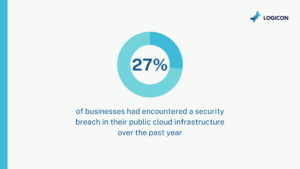
Solutions:
-
Encryption: Secure sensitive information even if unauthorized access is obtained through strong encryption for data during transit and at rest.
-
Regular Security Audits: Ask for frequent security audits in order to find vulnerabilities and bolster the cloud environment as much as possible against potential breaches.
-
Access Controls: Establish stringent access controls and observe the least privilege principle, allowing users access to only required resources.
-
Incident Response Plan: Create and test periodically an incident response plan to enable the easy identification, response to, and mitigation of data breaches.
-
User Education: Inform users of password strength, spotting phishing attempts and adoption of best security practices that would thwart unauthorized access.
Insecure APIs
Insecure APIs are another serious type of threat in cloud security when bad actors abuse weak spots found in application programming interfaces APIs. This may happen through weak authentication mechanisms, inadequate data validation or poor encryption which offers unauthorized people access to sensitive information or compromise the services rendered. Data leaks, service failures or loss of control on cloud resources due to insecure APIs may occur.
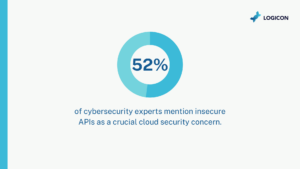
Solutions:
-
Secure Authentication Protocols: Strong authentication mechanisms, such as OAuth or API keys, must be used to allow only authorized entities to access APIs.
-
Input Validation: Establish strong input validation to evade injection attacks and guarantee data integrity that is processed via APIs.
-
API Encryption: Use strong encryption methods for data transmitted through APIs to avoid being intercepted by malicious actors.
-
Regular Security Audits: Perform regular audits of security in API implementations to locate and eliminate vulnerabilities, using automated tools to help with detection.
-
API Rate Limiting: Limit the rate to specify the maximum number of requests an API can handle in a given time interval that will prevent abuse and potential cloud computing attacks.
-
API Security Best Practices: Follow well-known API security best practices as suggested by organizations such as OWASP to ensure a comprehensive and robust security position.
Misconfigured Cloud Storage
Unauthorized access or exposure to sensitive data is a serious risk in cloud security and misconfigured cloud storage settings are one of the most common vulnerabilities. Improper access controls, unsecured storage buckets, weak encryption parameters all contribute to this spot. This can even occur from simple oversight during the configuration stages that lead to create vulnerabilities for attackers to exploit. Cloud storage can present organizations with risks of data breaches and compliance violations in case of improper configurations.
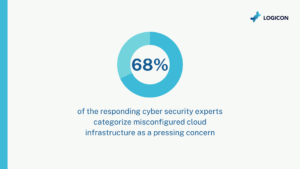
Solutions:
-
Principle of Least Privilege (PoLP): Give users and applications only the minimum level of access necessary for their specific tasks by following the principle of least privilege.
-
Regular Security Audits: Conduct frequent security audits to detect and fix misconfigurations, make use of automated tools and manual reviews in order to ensure correct settings.
-
Encryption Best Practices: Establish strong encryption mechanisms for data at rest and data in movement to protect sensitive information from unauthorized access.
-
Access Monitoring and Logging: Monitor and log cloud storage access for early detection and response to anomalous or unauthorized activities.
-
Cloud Security Policies: Create and implement global cloud security policies that cover such areas as the configurations of storage, access controls, encryption requirements etc.
-
Training and Awareness: Train the cloud storage configuration personnel about best practices and possible risks associated with misconfigurations.
Insider Threats
For cloud security, the insider threat entails people within an organization who use their access for compromise. This can either be due to malicious purposes, negligence or hacking. The insiders may also deliberately abuse their access for personal benefits, endanger security with acts like misconfiguration, or have been victimized by external threats that compromise some or all of their accounts.
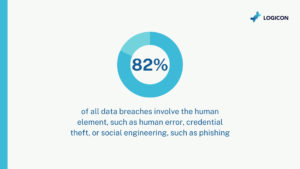
Solutions:
-
User Behavior Monitoring: Find the solutions that help analyze user behavior and detect suspicious patterns of activities or behaviors, which can be an indication of ill intent.
-
Access Controls: Apply the principle of least privilege to prevent giving employees access to resources beyond those required for their roles.
-
Employee Training: Provide regular security awareness training, educate employees about potential threats and significance of best security practices.
-
Incident Response Plan: To efficiently respond and mitigate the impact of insider threats once detected, create an incident response plan that should be developed recurrently.
-
Data Encryption: Implementing encryption to protect sensitive data can help mitigate damage even if an insider accesses information dishonestly.
-
Background Checks: Perform detailed background checks prior to hiring an individual to identify potential red flags in a person’s track record.
DDoS Attacks
In cloud security, Distributed Denial of Service(DDoS) attacks are a common threat in which harmful individuals connect devices to create multiple fake traffic for flooding system and hence making it unavailable to users with an excessive volume of traffic overloading it. This can be done through botnet attacks, network-based volumetric attacks targeting the bandwidth of networks or layer 7 application-layer based attacks against specific services. DDoS attacks can cause disrupted services, downtimes and potential financial losses.
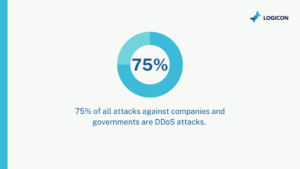
Solutions:
-
Traffic Monitoring and Filtering: Use traffic monitoring tools to identify irregular patterns and filtering mechanisms that could help in blocking malicious traffic.
-
Content Delivery Network (CDN): Distribute content with geographically separate servers using a CDN so that the system can absorb and reduce DDoS traffic.
-
Web Application Firewalls (WAF): WAFs should be implemented to filter and monitoring HTTP traffic to identify and block malicious traffic aimed at specific applications or services.
-
Cloud-Based DDoS Protection Services: Use a cloud-based service for DDoS protection that is able to grow to withstand and mitigate high scale attacks, thus averting disruptions in services.
-
Anycast DNS: Spread DNS requests across more than one services to make the service against DDoS attacks on the DNS infrastructure.
-
Incident Response Plan: Develop and regularly test an incident response plan that will allow you to respond promptly to a DDoS attack and recover from it.
-
Bandwidth Scaling: Keep scalable bandwidth to manage peak loads in traffic which can minimize the effects of volumetric DDoS attacks.
Lack of Visibility and Control
Organizations find it difficult to monitor and manage their cloud environments efficiently; they struggle as this results in the lack of visibility and control in cloud security. This can be due to many reasons, which include the complexity of cloud architecture, shadow IT practices or ineffective tools for monitoring. They are difficult to detect and respond to when there is low visibility as they may be indicative of data breaches, compliance issues or service disruptions.
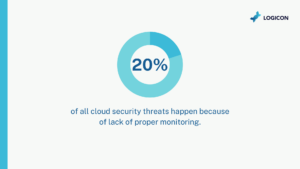
Solutions:
-
Cloud Security Platforms: Establish all-out cloud security systems that give unified awareness and governance over various cloud infrastructures.
-
Unified Monitoring Solutions: Implement integrated solutions that provide a comprehensive overview of cloud operations, such as user access, data transfers and system changes.
-
Identity and Access Management (IAM): Make IAM policies stronger to improve the management of user access and permissions, ensuring a least privilege principle.
-
Cloud Access Security Brokers (CASB): Implement CASB solutions that can monitor and regulate data transference between on-premises premises and cloud settings, implementing security policies.
-
Policy Automation: Implement policy enforcement tools that automatically apply security policies to cloud resources in a uniform way and on real-time basis.
-
Regular Audits and Assessments: Conduct regular audits and assessments to identify areas where visibility and control are lacking, thereby permitting changes and augmentations as quickly as possible.
Compliance and Legal Issues
The challenges experienced with compliance and legal issues in cloud security largely stem from the fact that this is an arena with changing regulatory landscapes and different laws. Issues always come up when multiple countries are involved, like data sovereignty concerns, different regulatory requirements, or lack of visibility into cloud activities can breed non-compliance and legal consequences. As such, if these issues are not addressed properly may lead to fines, legal action and a damaged reputation for an organization.
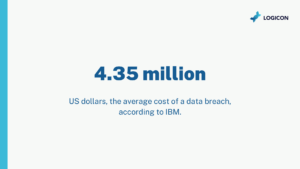
Solutions:
-
Compliance Assessment: Regular cloud environment auditing and assessing is necessary to adhere to both relevant regulatory standards and legal requirements.
-
Data Classification and Encryption: Data be sorted on the basis of sensitivity and encrypted for protecting sensitive information to handle concerns associated with handling data n sovereignty.
-
Legal Expertise: Seek high-caliber legal experts well versed in cloud computing security challenges to address intricate regulations and ensure compliance with the appropriate legislation.
-
Cloud Provider Certifications: Select cloud service providers who hold recognized certificates for compliance with necessary standards, so that the component infrastructure adheres to industry and regulatory requirements.
Identity and Access Management Issues
Security risks associated with the IAM in cloud security start from the weaknesses of identity and access permissions management, which open potential vulnerabilities. Reasons include poor authentication processes, overconfident access permissions, and insufficient user account life-cycle management. These issues are those that can open up the door for unauthorized access, data exposure, and compromise the confidentiality as well as integrity of sensitive information.
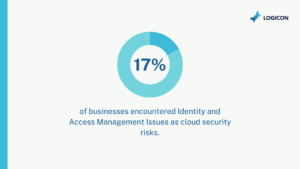
Solutions:
-
Multi-Factor Authentication (MFA): Establish MFA so that users will be required to provide multiple means of identification before they are granted access.
-
Regular Access Reviews: Conduct timely reviews of user access privileges on a regular basis to ensure that they reflect job roles and responsibilities; revoke them when no longer needed.
-
IAM Best Practices: They must follow IAM best practices, including strong password policies, secure credential storage and tight controls around authentication protocols.
-
Automated Provisioning and Deprovisioning: Employ automated tools for user onboarding and offboarding so as to ease the process of lifecycle management in managing users, thereby significantly reducing the risk of having dangling privileges.
-
Role-Based Access Control (RBAC): RBAC should be implemented to assign permissions based on the role of a job, meaning that users will have access only to what they need for their responsibilities.
Weak Encryption Practices
Weak practices in encryption in the cloud security process mean that sensitive data is protected using vulnerable encryption methods or fails to be adequately secured. This may happen because of old encryption algorithms, ineffective data encryptions or poor management of keys. Otherwise, weak encryption can expose organizations to high risks of data breaches, unauthorized access and compromise confidentiality in sensitive information.
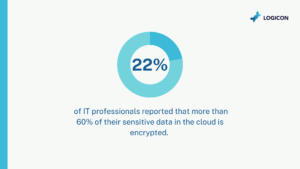
Solutions:
-
Strong Encryption Algorithms: Use recognized algorithms for industry-standard, up-to-date encryption that are known as secure and strong.
-
End-to-End Encryption: Secure data wherever, whenever and however it occurs by implementing end-to-end encryption.
-
Key Rotation: Change encryption keys frequently to mitigate the effects of compromised keys and improve overall security.
-
Secure Key Storage: Store encryption keys in secure vaults and implement proper access controls to avoid unauthorized use.
-
Regular Security Audits: Carry out frequent security evaluations to detect vulnerabilities in encryption procedures and rectify them immediately.
-
Transport Layer Security (TLS): Ensure the use of strong TLS protocols to secure data in transit getting rid of eavesdropping and man-in-the-middle attacks.
Vendor Lock-In
Vendor lock in is when organizations get locked into a single cloud service provider and do not have the ability to migrate away from or even back to on-premises solutions due to over dependency on that provider. This can happen during the use of proprietary technologies, problems with data format and structure, or difficulties in integrating customized solutions. Risk elements of vendor lock-in include less flexibility, potential cost increases and lower bargaining power with the incumbent provider.
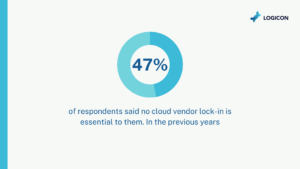
Solutions:
-
Multi-Cloud Strategy: Implement a multi-cloud strategy to break workloads across multiple cloud providers and avoid reliance on one vendor.
-
Standardized APIs: Standardized APIs should be prioritized to ensure interoperability and ease of migration between clouds.
-
Containerization and Orchestration: Use containerization, such as Docker and orchestration platforms like Kubernetes, to virtualize applications independent of underlying infrastructure so they can be easily relocated.
-
Data Portability Standards: Adopt data portability standards to ensure the ability to shift data from one cloud environment to another.
-
Cloud Agnostic Solutions: Or select cloud-agnostic technologies and services that do not rely heavily on provider-specific features.
FAQs: Cloud Security Risks Management
What is the difference between cloud security and cybersecurity?
Cloud security, in particular, addresses specific challenges of protecting data, applications and infrastructure that are located within clouds. Considering the peculiar nature of these latter environments, misconfigurations and data breaches also have to be taken into account. On the other hand, cybersecurity is a more comprehensive label for security of any digital system or information be it in-house or cloud based. While both have general principles, cloud security is designed for the individual peculiarities of cloud computing.
What are cloud security breaches 2024?
If unauthorized individuals get access to sensitive data or systems within a cloud environment, there is a breach in the cloud security. This breach may occur due to variety of factors like weak authentication, misconfigurations or exploitation of vulnerabilities. It may lead to data theft, interrupted services, impaired integrity and underlines the importance of an effective security system in cloud computing that can prevent and contain such incidents.
What are the 3 key areas for cloud security?
The 3 essential areas in cloud security are data protection, identity and access management (IAM) ,and infrastructure security. Data protection involves securing sensitive information IAM ensures proper control over user access and infrastructure security focuses on protecting the underlying cloud architecture. A holistic approach to these fields is crucial for developing a strong and resilient cloud security stance.
Can cloud security be hacked?
While no system is entirely hack-proof, rigorous cloud security defenses greatly diminish the probability of a breach. Security protocols, encryption and monitoring are heavily invested in cloud providers. But the risk of a breach is always there, quite frequently brought on by improper configuration, weak controls over access or changing cyber threats. Regular security audits, following the best practices and staying informed on new risks will help minimize the possibility of a successful breach in security problems with cloud computing.
Is the cloud 100% safe?
No, the cloud is not completely secure. While cloud providers deploy stringent security measures, zero-risk is hard to achieve considering the potential dynamic nature of cyber threats. Therefore, cloud users must be responsible for configuring and managing their resources in a secure manner. Clouds are secure as long as updates occur on regular basis, strong authentication schemes are used, and companies follow best practice recommendations; however, firms must remain aware and active to counter emerging security threats.
Wrapping up: Cloud Security Risks & Solutions
As we wrap up this exploration of the top 10 cloud security risks in 2024, remember: Vigilance is the cornerstone of a robust digital future. When you understand and tackle these challenges directly, you give your organization the power to handle the cloud securely. Be proactive, ensure that the security measures are very strong and take on the changing environment with courage.
There is much at stake when you transfer your data and operations to the realm of cloud computing – protecting it, safeguarding it isn’t just a priority; rather, it is an ongoing commitment to excellence in the ever-changing landscape of cloud computing.

